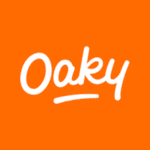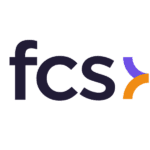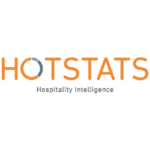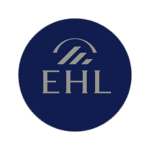
Stock markets jumped and the world woke from its Covid-19 slumber when the first vaccine was announced several months back.
Today, vaccine shots are steadily being distributed around the world. More and more countries are considering (or have already started) relaxing restrictions and re-opening their borders.
While there’s no set timeline for a full, world-wide reopening, we can be sure of one thing: once governments give the green light, local and regional recovery will come quickly.
Now the question is: Is your hotel ready for it? And if not, which tools do you need to get ready ASAP?
Covid-19: The impact and outlook in the hospitality industry around the world
Over the past year, the industry benchmarking tool STR shared performance trends and outlooks from around the world. Let’s briefly examine how some of the world’s leading hospitality markets fared in recent months and what we can expect from them in the future.
Europe
The average occupancy in Europe fell to a record low of 11.4% immediately after lockdowns were announced for April. For 2020, the overall average daily rate (ADR) dropped to a mere €90.89 and revenue per available room (RevPAR) sank to €30.05. For the whole year, the average occupancy came to only 33.1% thanks to peaks of 43.3% in August and a strong start to the year. Due to a lasting second lockdown and overall slow vaccine distribution, the outlook for the next 90 days is still bleak.
Asia
2020 started strong but travel restrictions cut arrivals by 35% and 65% across Asia in February and March respectively. This resulted in a drop of over 30% in average occupancy. Many countries in this region got the pandemic under control early on though. Consequently, they’ve seen low case numbers over the past months and were able to reopen domestically.
Nations with strong domestic tourism, like China and Japan, saw their hospitality recover strongly. The average occupancy rate among the currently operating hotels in China is only 10% below that of 2019. Unsurprisingly, the outlook here is positive.
Countries relying heavily on international arrivals, like Thailand and Vietnam, are facing bigger challenges these days. However, hopes are high that the hospitality sector there will bounce back quickly once borders reopen.
Middle East
The Middle East has shown a comparatively strong performance throughout the entire last year. Currently, the region even tops China and the United States in terms of average occupancy. One reason is that Dubai was one of the only countries worldwide which remained open to international travelers throughout the crisis. However, the OTB outlook remains low despite big events like the postponed EXPO 2020 being on the horizon.
Vaccination campaigns are picking up speed
Many countries are moving forward well with their vaccine initiatives. According to the Bloomberg vaccine tracker and World in Data, Israel is currently ahead of everyone else. Almost 50% of their population is already fully vaccinated. The United States is picking up speed and has inoculated 11.8% of its residents. Chile leads the list in Latin America with 11.2% of its population being fully vaccinated. In the Middle East, the United Arab Emirates and Bahrain are also making good progress.
The more countries push ahead their vaccination campaigns, the faster nations and regions can reopen and permit travel again. Of course, there are no fixed dates to work with. But Europe’s rebound in last summer and China’s quick bounce-back show that there is huge pent-up demand just waiting for the go-ahead. As a hotelier, it’s the ideal time to implement the needed tools to navigate this unpredictable situation.
Making the most of the recovery phase with a powerful RMS
Today, we know that recovery is imminent. But we can’t make global predictions because of regional and national differences in travel restrictions, vaccine progress and other factors.
Historical data or recovery patterns from other crises won’t guide us either since the Covid-19 pandemic differs from anything we’ve seen. Still, it’s crucial to be ready for recovery and make the most of it. That way you can make up some of the loss from the past year and get your hotel back on its feet.
Manual data collection – an unsatisfactory approach
Of course, you can monitor markets manually and update your rates according to the latest changes you detect. However, it’s impossible to collect and evaluate data in real time on your own. This means you’d miss out on many chances with this approach.
Your best (and only) chance to stay on top of developments in these unpredictable times is a revenue management system (RMS). IT will allow you to set optimized rates according to the latest demand shifts.
But which RMS to choose for your hotel? Below, you’ll find a list of boxes your new RMS must check. Only then it can help you maximize your revenue during the upcoming ramp-up and recovery phase.
Forward-looking demand data
Forward-looking demand data is essential for accurate topline predictions and relevant promotions. It includes flight searches, overall search volume for your destination and which length of stay travelers are checking for. A powerful RMS like Atomize will collect all this information and even break it down by source market. It would take you hours to gather this data manually and it would be outdated by the time you could analyze it.
Use these insights to identify high-compression dates ahead of time and to recognize trends as they emerge. Gaining this deep understanding of traveler intent allows you to optimize your revenue strategy in real time. This means you make the most of new developments from the beginning and create offers targeted at promising source markets.
Automated, real-time pricing
Manually updating your rates is time-consuming and opens the door to human error and missed opportunities. After all, you can’t be present 24/7 to analyze data and adjust rates by hand, every time you see demand change.
An advanced RMS can support you here in two ways. First, it will keep analyzing the market to detect even the slighted shifts. Then, your RMS can either send you live rate suggestions which you can approve or reject. Alternatively, it can update your rates automatically, so they always reflect the market’s current state.
The first option gives you more control, but there will also be a lag between the rate suggestion and the moment you approve it. At this time you might have already lost some revenue opportunities. If you opt for the real-time rate updates, you can take advantage of even the smallest shifts all while saving hours of valuable time.
Group displacement analysis
With the rise of online and hybrid events over the past year, group and MICE business has changed drastically. Once in-person events will be possible again, the inquiry volume will jump, as organizers analyze the feasibility of on-site events.
Your hotel will have to weigh its options as well. Should you accept the group or does your forward-looking data project high transient demand for the requested dates? If so, would this individual business come from high-commission OTAs or your website? Going over these and other factors, will increase your turnaround time for group requests and put a strain on your staff. Avoid this by choosing an RMS that helps you do quick and accurate displacement analysis. Being able to make faster, data-driven decisions will allow you to win the best business for your hotel.
Multi-property set-up for clusters
If you look after several hotels, an RMS with a multi-property capability will make your workflow more efficient. Stop switching between windows and having different sign-ins for each hotel. Instead, get a complete overview and access to detailed reporting on your dashboard and see which properties need attention. This lets you focus your energy better and support your hotels quickly and as needed.
After suffering through the last twelve months, you can’t afford to let this recovery phase take you by surprise. Now is the time to get your property ready for the ramp-up. Using the latest in hotel technology will give you a competitive edge at this time.
We know that investing in new tech right now can be difficult, given current budget constraints. That’s why we’ve created a risk-free option for you. It allows you to use Atomize’s industry-leading technology, leverage automation and forward-looking data to create a competitive edge during recovery.


















